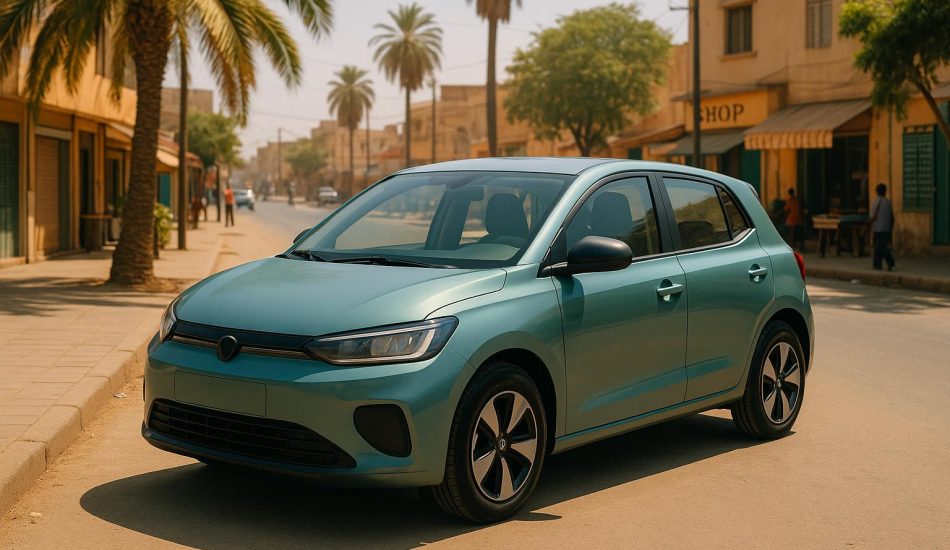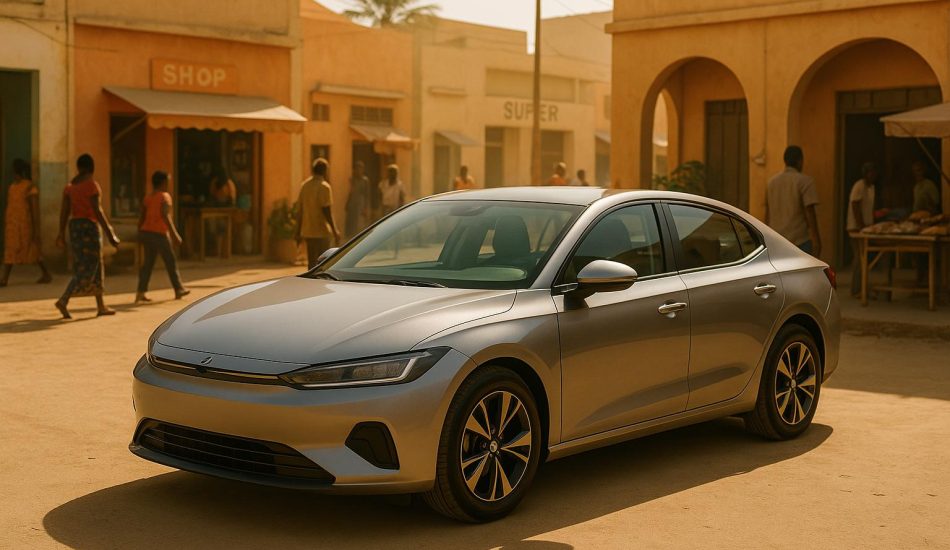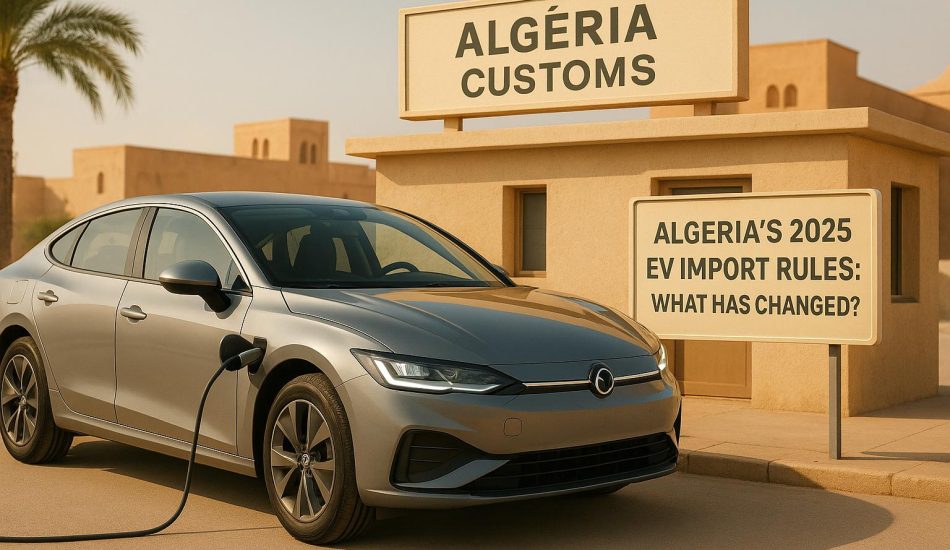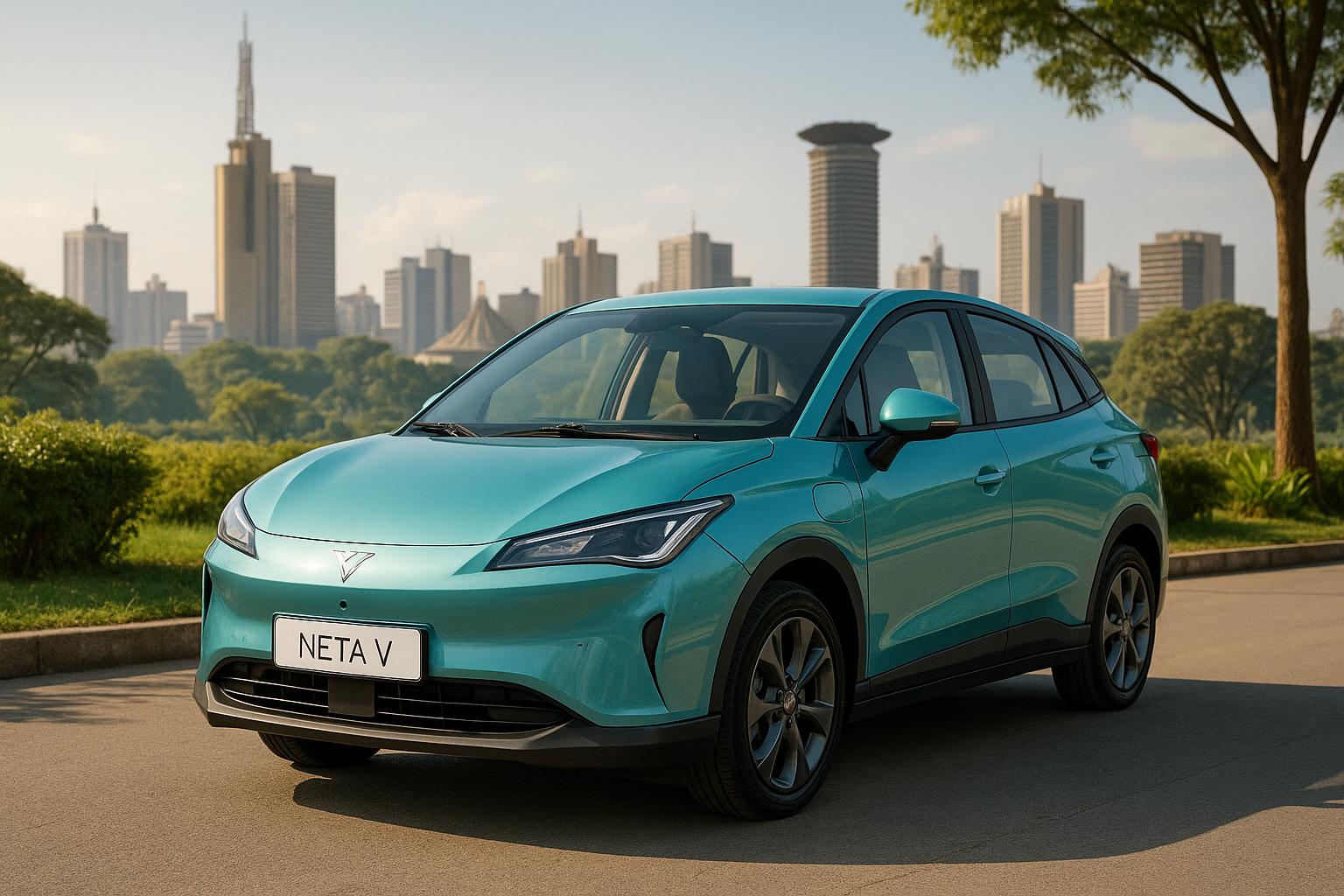
The Neta V electric car is gaining attention in Kenya as an affordable, low-maintenance option for those considering electric vehicles. With a focus on city driving, it offers a compact design, modern features, and reduced running costs compared to gas-powered cars. Here’s a quick look at what you need to know:
- Price: Positioned as a budget-friendly electric car for Kenyan buyers.
- Driving Range: Suitable for daily commutes, with home and fast-charging options available.
- Features: Includes a touchscreen infotainment system, smartphone integration, climate control, and regenerative braking.
- Pros: Lower maintenance costs, easy to drive in cities, and zero emissions.
- Cons: Limited charging infrastructure in rural areas, potential performance issues on rough roads, and battery replacement costs after several years.
The Neta V is ideal for city-based drivers with access to charging stations. However, it may not suit those frequently traveling in rural areas or on rough terrain. If you’re looking for a cost-effective way to transition to electric mobility, the Neta V is worth considering.
1. Neta V Specifications and Market Position
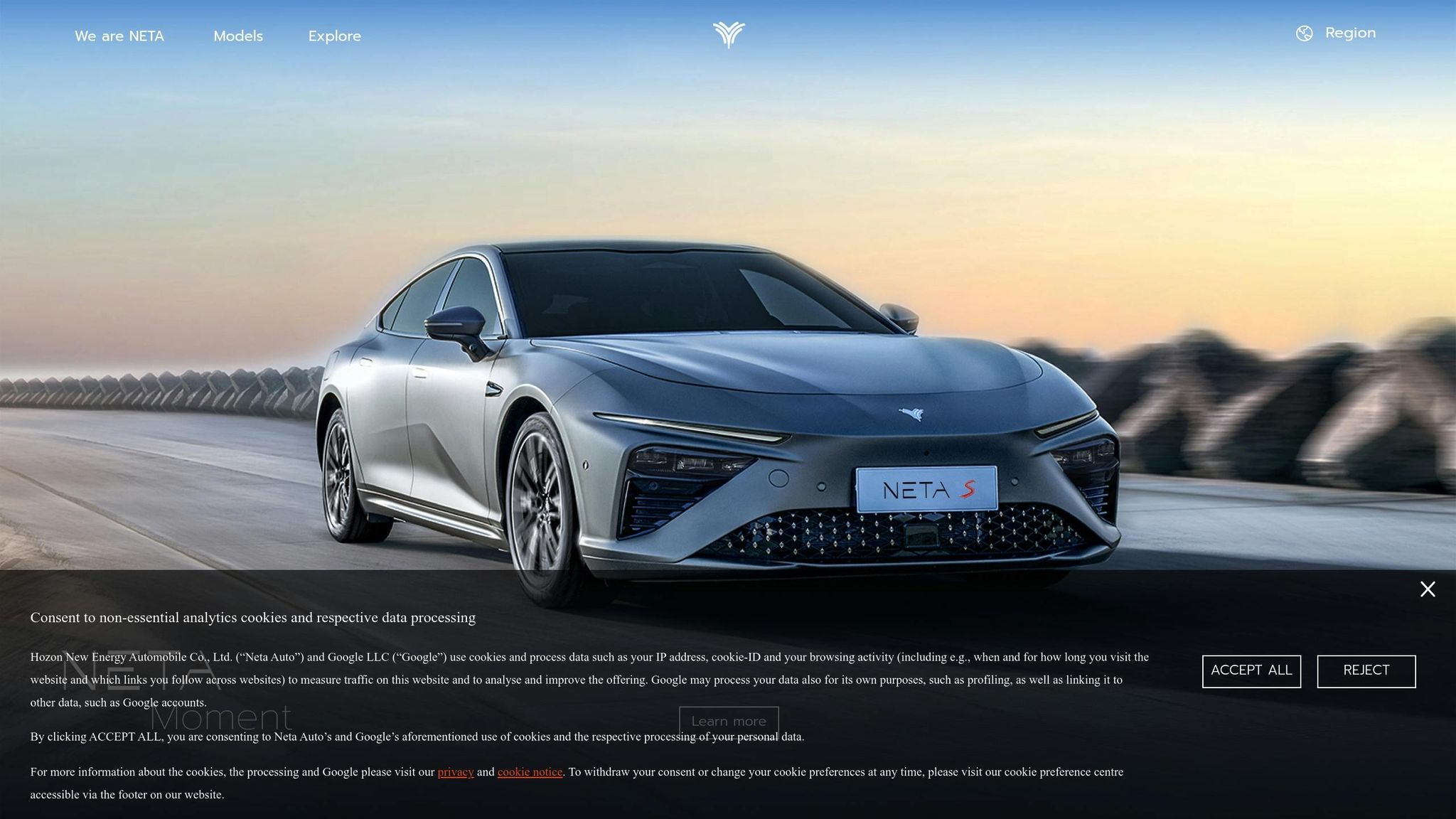
Features and Specifications
The Neta V is a compact SUV designed with Kenyan roads in mind, whether you’re navigating city streets or rural paths. Its sleek design blends practicality with modern technology. At its core is an electric motor tailored for efficient daily use, paired with a lithium iron phosphate battery system known for its durability, safety, and reliable performance in warmer climates. Inside, the Neta V boasts a touchscreen infotainment system with smartphone integration, climate control, and a digital dashboard. The interior is built to comfortably accommodate passengers while offering flexible cargo space for added convenience.
Pricing and Affordability
The Neta V is positioned as an accessible electric vehicle for the Kenyan market, offering a wallet-friendly price aimed at a wide range of buyers. Its running costs are significantly lower compared to traditional fuel-powered cars, making it an appealing choice for those looking to save on long-term expenses without compromising on functionality.
Driving Range and Performance
When it comes to range, the Neta V is built to handle the demands of daily commuting, both in standardized tests and real-world conditions. It supports charging at home or via fast-charging stations and includes regenerative braking, which boosts efficiency during stop-and-go traffic or on hilly routes.
Advantages and Limitations
The Neta V’s strengths lie in its competitive pricing, lower maintenance costs, and compact design, which makes it a breeze to maneuver in urban settings. However, challenges include limited access to fast-charging stations in remote areas, potential difficulties on rougher roads, the future expense of battery replacement, and uncertainties surrounding its resale value.
Kenya’s NEWEST Electric Car? | NETA V Full Review and Features | EV COMPACT CROSS
sbb-itb-99e19e3
Pros and Cons
When considering the Neta V’s features and price, it’s clear that this compact electric SUV has both advantages and challenges for Kenyan drivers. These trade-offs are crucial to weigh, especially for those thinking about making the switch to electric mobility.
| Pros | Cons |
|---|---|
| Affordable pricing opens up electric vehicle ownership to more Kenyan buyers | Limited charging infrastructure in rural areas makes long-distance travel difficult |
| Lower operating costs help reduce daily expenses compared to gasoline-powered cars | Battery replacement costs can become a burden after several years of use |
| Compact design is ideal for maneuvering through crowded city streets and tight parking spaces | Performance issues may arise on rough or unpaved roads, common in rural Kenya |
| Reduced maintenance needs due to fewer moving parts than traditional vehicles | Uncertain resale value due to Kenya’s emerging EV market |
| Regenerative braking boosts efficiency, particularly in city traffic and hilly areas | Range limitations require careful planning for extended trips |
| Modern technology features like touchscreen infotainment and smartphone integration | Dependence on electricity can be inconvenient during power outages |
| Environmental benefits with zero direct emissions, contributing to cleaner air | Initial learning curve for drivers new to electric vehicles |
The financial perks of the Neta V are hard to ignore. Its competitive price, combined with savings on fuel and maintenance, makes it an appealing option for budget-conscious buyers. These cost advantages are especially attractive as fuel prices continue to rise.
However, infrastructure challenges remain a significant hurdle. While cities like Nairobi are expanding their charging networks, rural areas still lag behind. This disparity can be a dealbreaker for those who frequently travel long distances or venture into less-developed regions.
Additionally, the performance limitations of the Neta V cannot be overlooked. Its lower ground clearance and lighter frame may not handle Kenya’s rugged terrain as well as traditional SUVs, making it less suitable for drivers in areas with poor road conditions.
Conclusion
The Neta V presents an inviting option for those looking to step into the world of electric vehicles, thanks to its budget-friendly pricing and low running costs. With modern tech features and minimal maintenance demands, it enhances the overall ownership experience.
When it comes to performance, the Neta V thrives in city settings. Its compact design makes navigating Nairobi’s bustling streets a breeze, and the increasing availability of charging stations in urban areas supports its practicality for daily use. However, it does face challenges on rough terrain, and the limited charging infrastructure in rural areas restricts its utility for long-distance trips or off-road adventures. This makes it less ideal for drivers who frequently tackle tough road conditions.
Prospective buyers should carefully consider their daily commute and access to charging facilities before deciding. For those with consistent urban driving patterns, easy access to charging, and a goal to lower their carbon footprint, the Neta V is a solid choice. On the other hand, drivers with more varied needs or rural routes might find it more practical to explore hybrid options or wait for further advancements in the local EV market.
The Neta V symbolizes the progress of Kenya’s growing electric vehicle market. While it offers clear advantages, it also underscores the need for continued development in charging infrastructure. For city-based drivers ready to embrace electric mobility, the Neta V provides an efficient and practical transition to a greener way of driving.
FAQs
What is the Neta V electric car’s driving range, and how reliable is it for everyday use?
The Neta V electric car offers an estimated driving range of about 400 kilometers (249 miles) per charge, according to NEDC standards. In everyday driving scenarios, most users report a consistent range of 380–400 kilometers (236–249 miles), making it a solid option for daily commutes and longer journeys alike.
With this level of reliability, the Neta V proves to be a practical companion for Kenyan roads. Whether you’re tackling daily errands, heading to work, or venturing out on longer trips, it meets the growing need for efficient and environmentally friendly transportation in the region.
How does the cost of maintaining a Neta V electric car compare to a gasoline-powered vehicle in Kenya?
Maintaining a Neta V electric car in Kenya is easier on the wallet compared to a traditional gas-powered vehicle. Why? Electric cars have fewer moving parts, which means there’s less wear and tear and fewer repairs to worry about. Plus, you can say goodbye to oil changes and many of the routine engine maintenance tasks that come with gasoline engines.
Take this as an example: over a distance of 62,000 miles (or 100,000 kilometers), the total cost of owning a Neta V is noticeably lower than that of a gas-powered car. Charging the Neta V is also incredibly affordable. A full charge costs about $6.80 (roughly Ksh 800), which is far cheaper than filling up a gas tank. These savings make the Neta V a smart choice for anyone in Kenya ready to embrace electric mobility.
What charging options are available for the Neta V in Kenya, and how suitable is it for rural drivers?
The Neta V in Kenya offers two charging options: AC charging, which takes around 8 hours for a full charge, and DC fast charging, capable of charging up to 80% in just about 30 minutes. These choices are particularly convenient for drivers in urban areas where charging stations are more readily available.
Kenya Power is stepping up efforts to expand the EV charging network, with plans to install 45 charging stations in key counties, including Nairobi, within the next year. However, rural areas still face limited charging infrastructure, which could make the Neta V less practical for long-distance or rural travel. Drivers in these regions will need to carefully plan their routes to ensure access to charging points.


